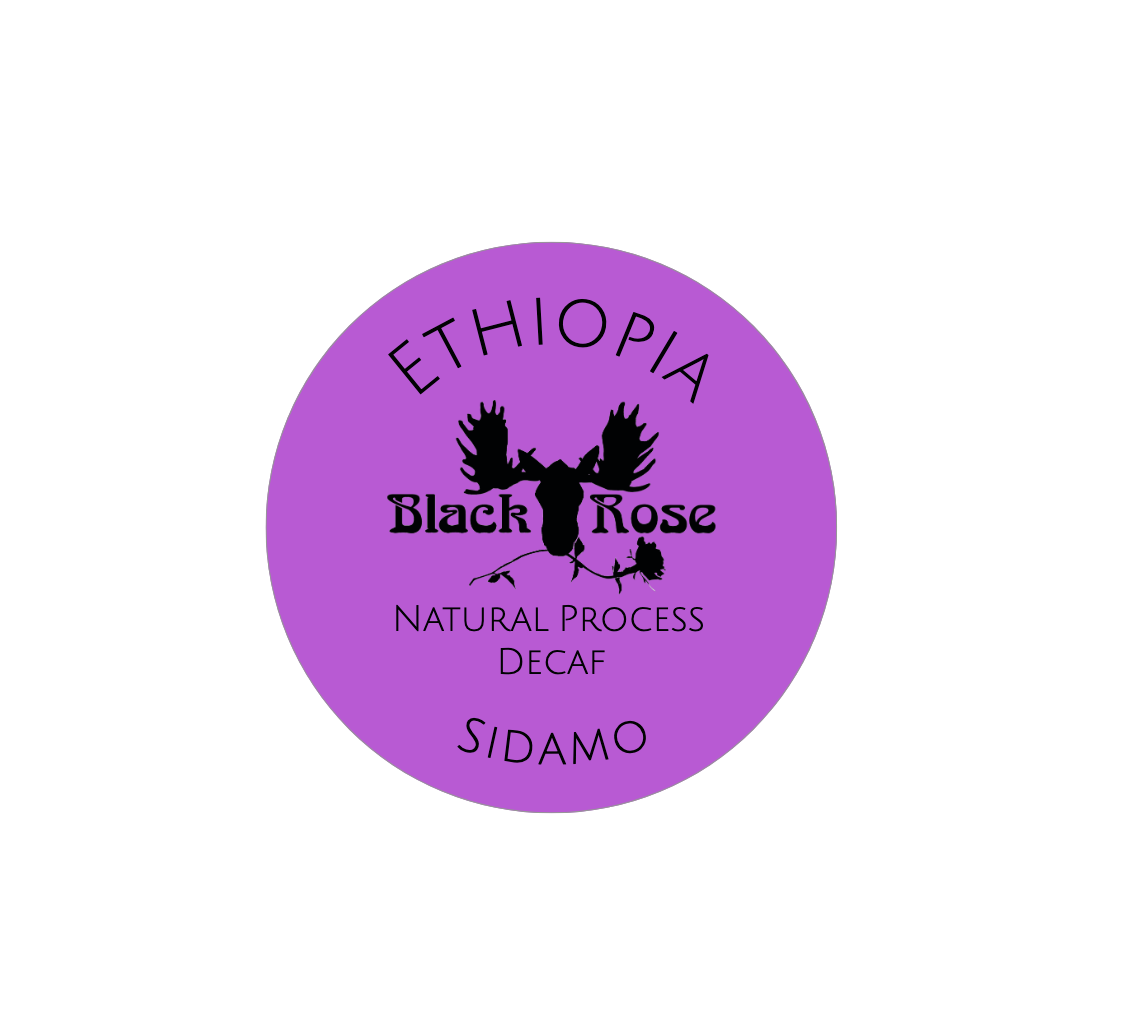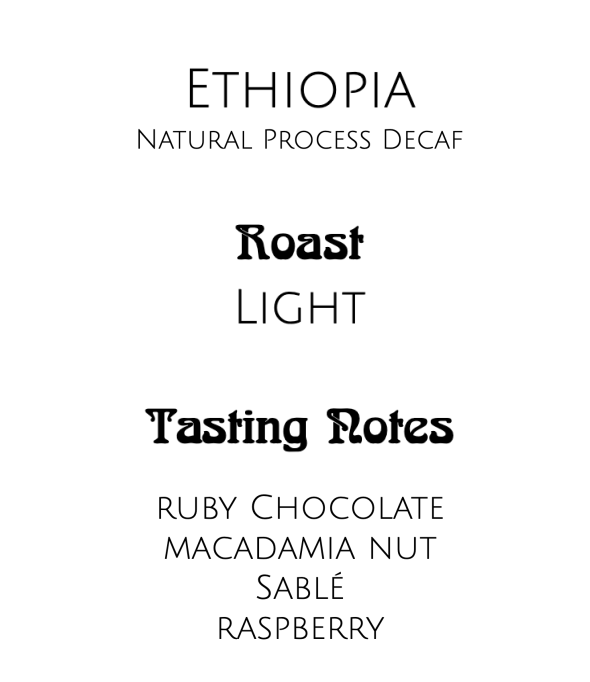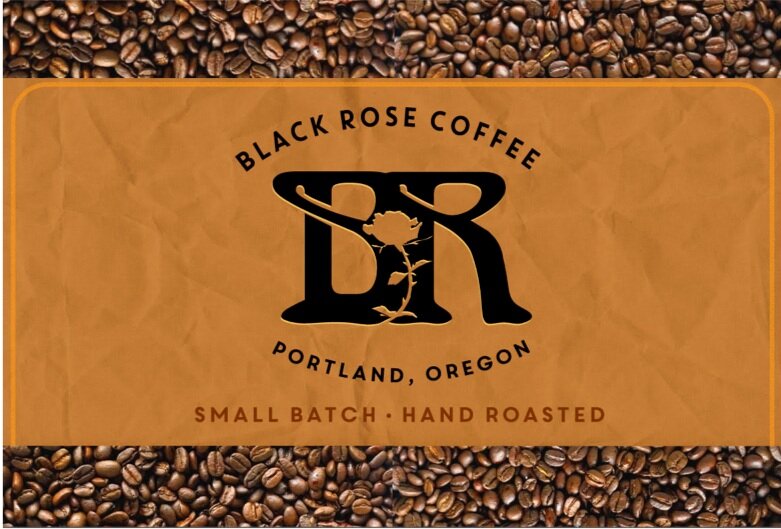 Image 1 of 2
Image 1 of 2

 Image 2 of 2
Image 2 of 2



Roasters Special Decaf - Ethiopia Sidamo Natural Process
Sidamo, Ethiopia
Swiss Water Process Decaf
Tasting Notes: Ruby Chocolate - Macadamia Nut - Sablé - RaspberryIf you were a fan of Aurora, this is your new favorite coffee! It’s impossible to replace a legend, so instead we move forward. Black Rose’s next great Natural Process decaf is here! If you’re looking for a flavorful and complex light roast decaf, this is the place!
I roast it low-and-slow, to develop buttery macadamia notes up front, complimented beautifully by raspberry sweetness on the finish. Sugar cookie (sablé) is, fittingly, the vessel that brings these layered flavors together. I liken it to a Tahoe Cookie (iykyk) with complex and flavorful Ruby Chocolate.
Enjoy :-)
Roast Level in CAPS
LIGHT ROAST - Light Medium - Medium- Dark Medium - Espresso
SWISS WATER PROCESS DECAF?!
Swiss Water decaf is a method of decaffeinating coffee beans using only water, temperature, and time, without the use of any chemical solvents. This process, known for being 100% chemical-free, preserves the coffee's original flavor and characteristics, resulting in a 99.9% caffeine-free coffee. The Swiss Water Process is a patented method developed in Switzerland and is known for its high quality and sustainability.
Here's a more detailed explanation:
The Process:
Green Coffee Extract (GCE): The process starts with creating a Green Coffee Extract, which is essentially water saturated with all the soluble components of coffee except caffeine.
Immersion: The green coffee beans are immersed in the GCE.
Osmosis: The caffeine from the beans diffuses into the GCE due to osmosis, while other flavor and aroma components remain in the bean.
Carbon Filtration: The GCE, now containing caffeine, is passed through a carbon filter that traps the caffeine molecules.
Regeneration: The carbon filters are regenerated, and the caffeine is removed, allowing the GCE to be reused.
Repeat: This process is repeated until the beans are 99.9% caffeine-free.
Drying and Roasting: Finally, the decaffeinated beans are dried and prepared for roasting. This process, known for being 100% chemical-free, preserves the coffee's original flavor and characteristics, resulting in a 99.9% caffeine-free coffee. The Swiss Water Process is a patented method developed in Switzerland and is known for its high quality and sustainability.
Here's a more detailed explanation:
The Process:
Green Coffee Extract (GCE): The process starts with creating a Green Coffee Extract, which is essentially water saturated with all the soluble components of coffee except caffeine.
Immersion: The green coffee beans are immersed in the GCE.
Osmosis: The caffeine from the beans diffuses into the GCE due to osmosis, while other flavor and aroma components remain in the bean.
Carbon Filtration: The GCE, now containing caffeine, is passed through a carbon filter that traps the caffeine molecules.
Regeneration: The carbon filters are regenerated, and the caffeine is removed, allowing the GCE to be reused.
Repeat: This process is repeated until the beans are 99.9% caffeine-free.
Drying and Roasting: Finally, the decaffeinated beans are dried and prepared for roasting.
Sidamo, Ethiopia
Swiss Water Process Decaf
Tasting Notes: Ruby Chocolate - Macadamia Nut - Sablé - RaspberryIf you were a fan of Aurora, this is your new favorite coffee! It’s impossible to replace a legend, so instead we move forward. Black Rose’s next great Natural Process decaf is here! If you’re looking for a flavorful and complex light roast decaf, this is the place!
I roast it low-and-slow, to develop buttery macadamia notes up front, complimented beautifully by raspberry sweetness on the finish. Sugar cookie (sablé) is, fittingly, the vessel that brings these layered flavors together. I liken it to a Tahoe Cookie (iykyk) with complex and flavorful Ruby Chocolate.
Enjoy :-)
Roast Level in CAPS
LIGHT ROAST - Light Medium - Medium- Dark Medium - Espresso
SWISS WATER PROCESS DECAF?!
Swiss Water decaf is a method of decaffeinating coffee beans using only water, temperature, and time, without the use of any chemical solvents. This process, known for being 100% chemical-free, preserves the coffee's original flavor and characteristics, resulting in a 99.9% caffeine-free coffee. The Swiss Water Process is a patented method developed in Switzerland and is known for its high quality and sustainability.
Here's a more detailed explanation:
The Process:
Green Coffee Extract (GCE): The process starts with creating a Green Coffee Extract, which is essentially water saturated with all the soluble components of coffee except caffeine.
Immersion: The green coffee beans are immersed in the GCE.
Osmosis: The caffeine from the beans diffuses into the GCE due to osmosis, while other flavor and aroma components remain in the bean.
Carbon Filtration: The GCE, now containing caffeine, is passed through a carbon filter that traps the caffeine molecules.
Regeneration: The carbon filters are regenerated, and the caffeine is removed, allowing the GCE to be reused.
Repeat: This process is repeated until the beans are 99.9% caffeine-free.
Drying and Roasting: Finally, the decaffeinated beans are dried and prepared for roasting. This process, known for being 100% chemical-free, preserves the coffee's original flavor and characteristics, resulting in a 99.9% caffeine-free coffee. The Swiss Water Process is a patented method developed in Switzerland and is known for its high quality and sustainability.
Here's a more detailed explanation:
The Process:
Green Coffee Extract (GCE): The process starts with creating a Green Coffee Extract, which is essentially water saturated with all the soluble components of coffee except caffeine.
Immersion: The green coffee beans are immersed in the GCE.
Osmosis: The caffeine from the beans diffuses into the GCE due to osmosis, while other flavor and aroma components remain in the bean.
Carbon Filtration: The GCE, now containing caffeine, is passed through a carbon filter that traps the caffeine molecules.
Regeneration: The carbon filters are regenerated, and the caffeine is removed, allowing the GCE to be reused.
Repeat: This process is repeated until the beans are 99.9% caffeine-free.
Drying and Roasting: Finally, the decaffeinated beans are dried and prepared for roasting.











